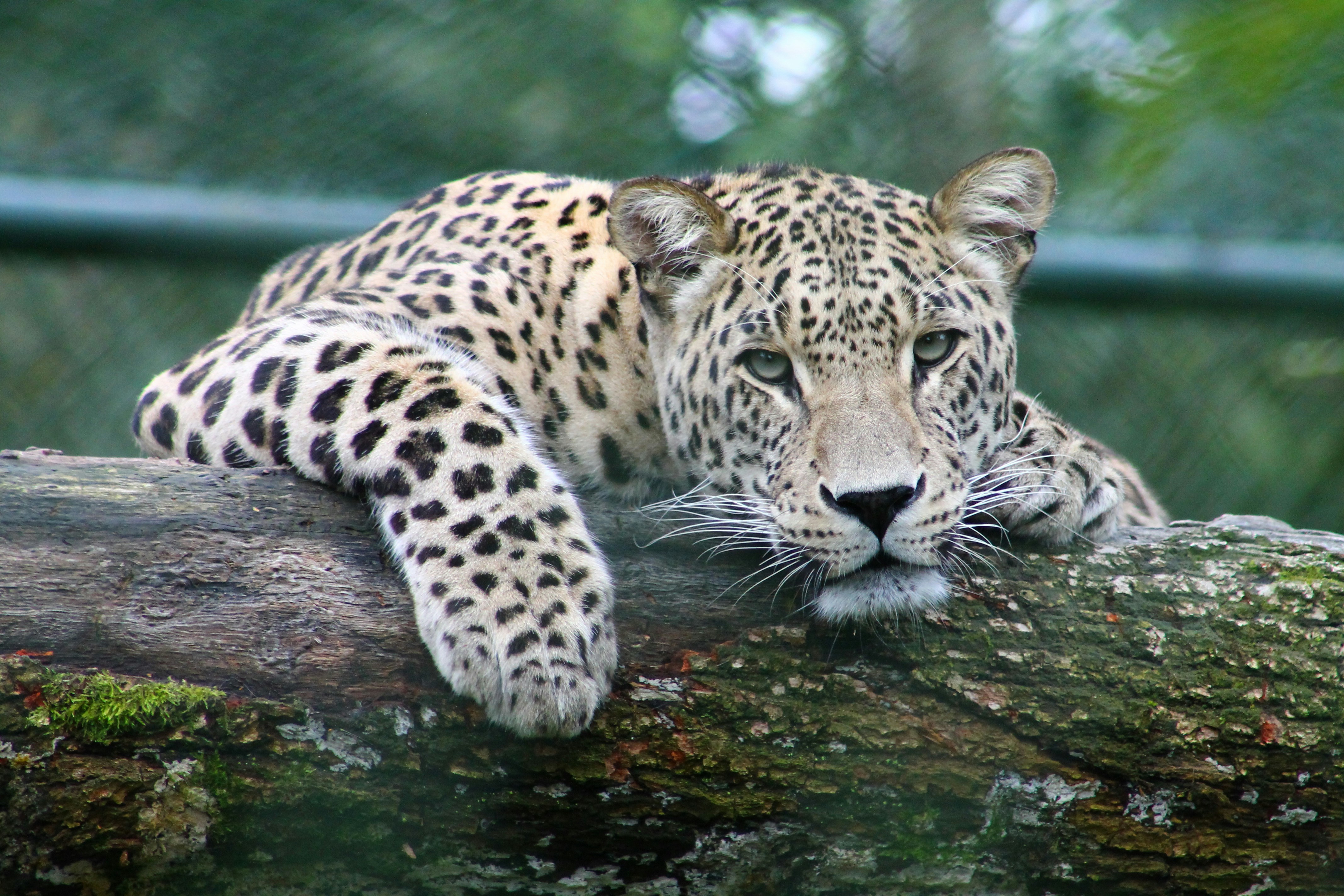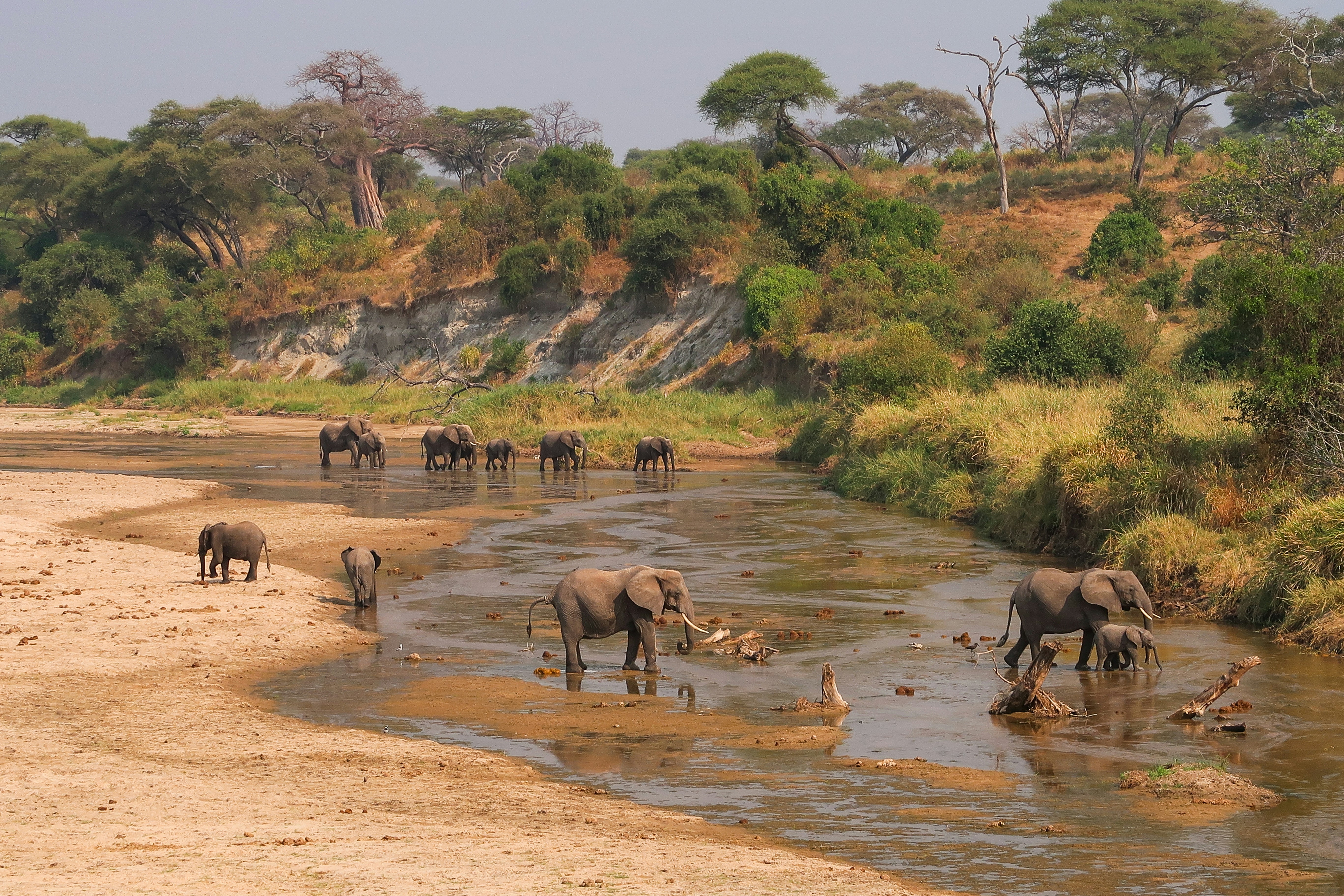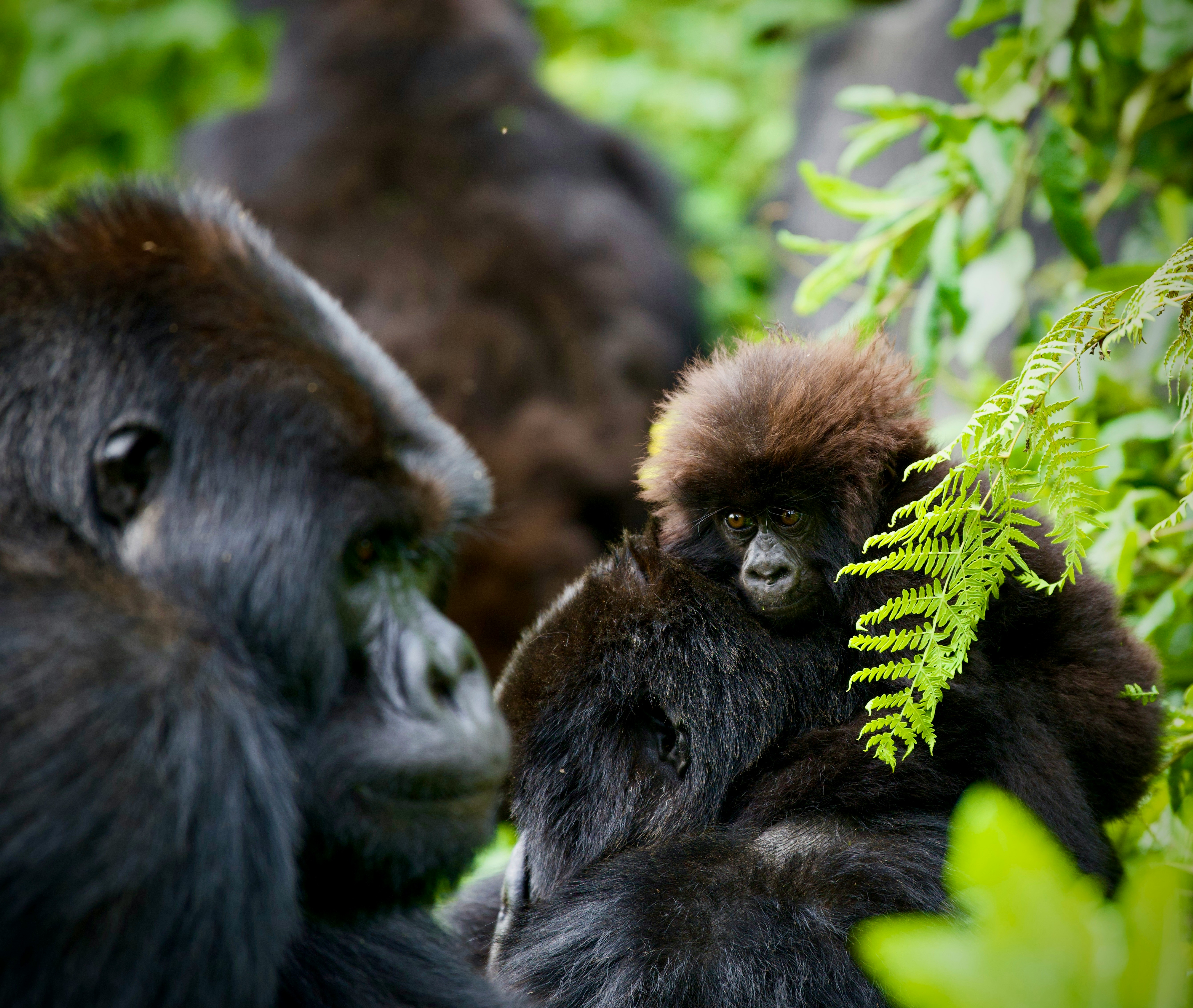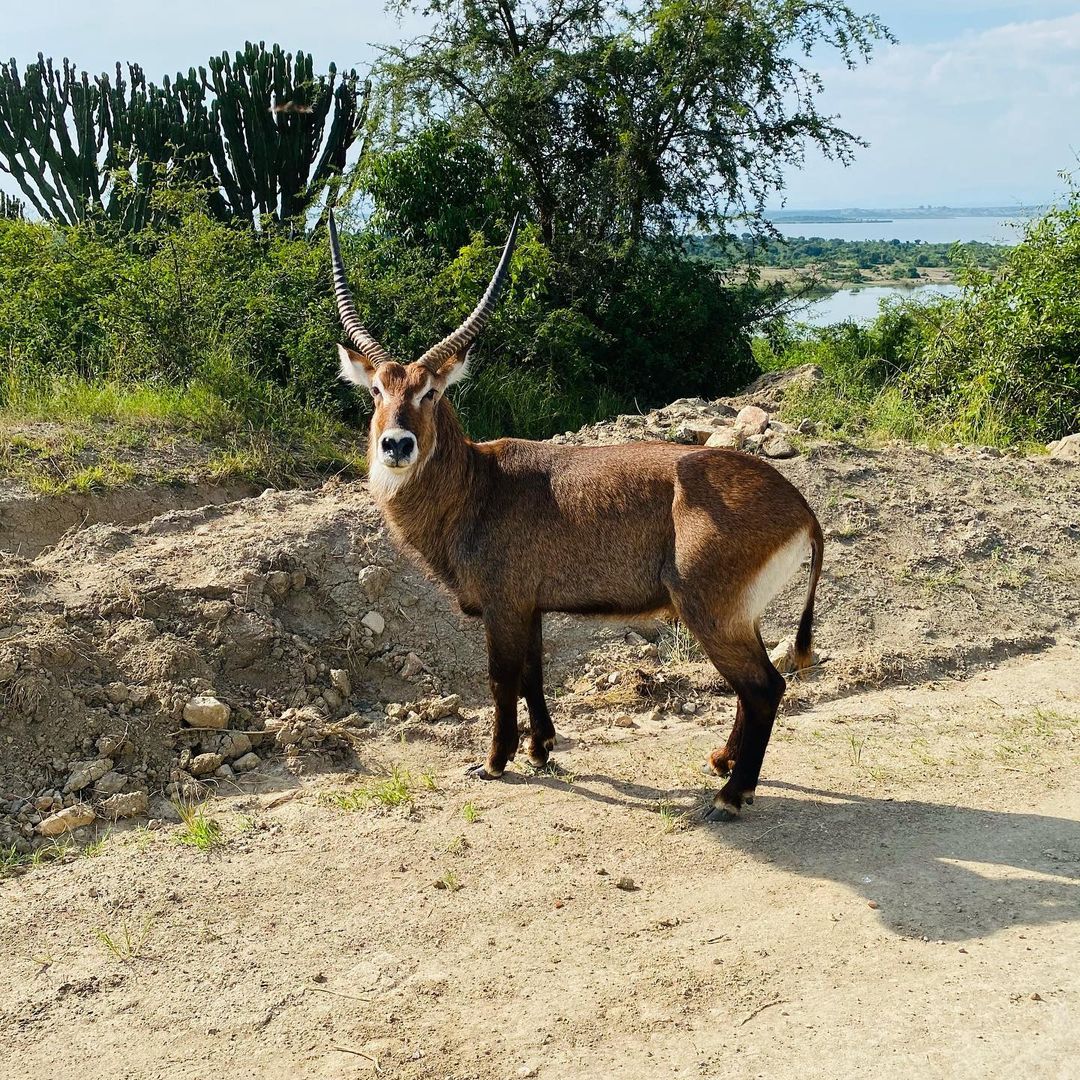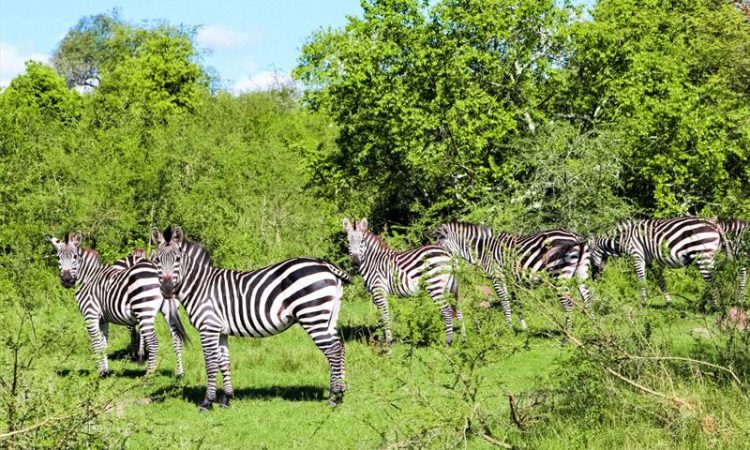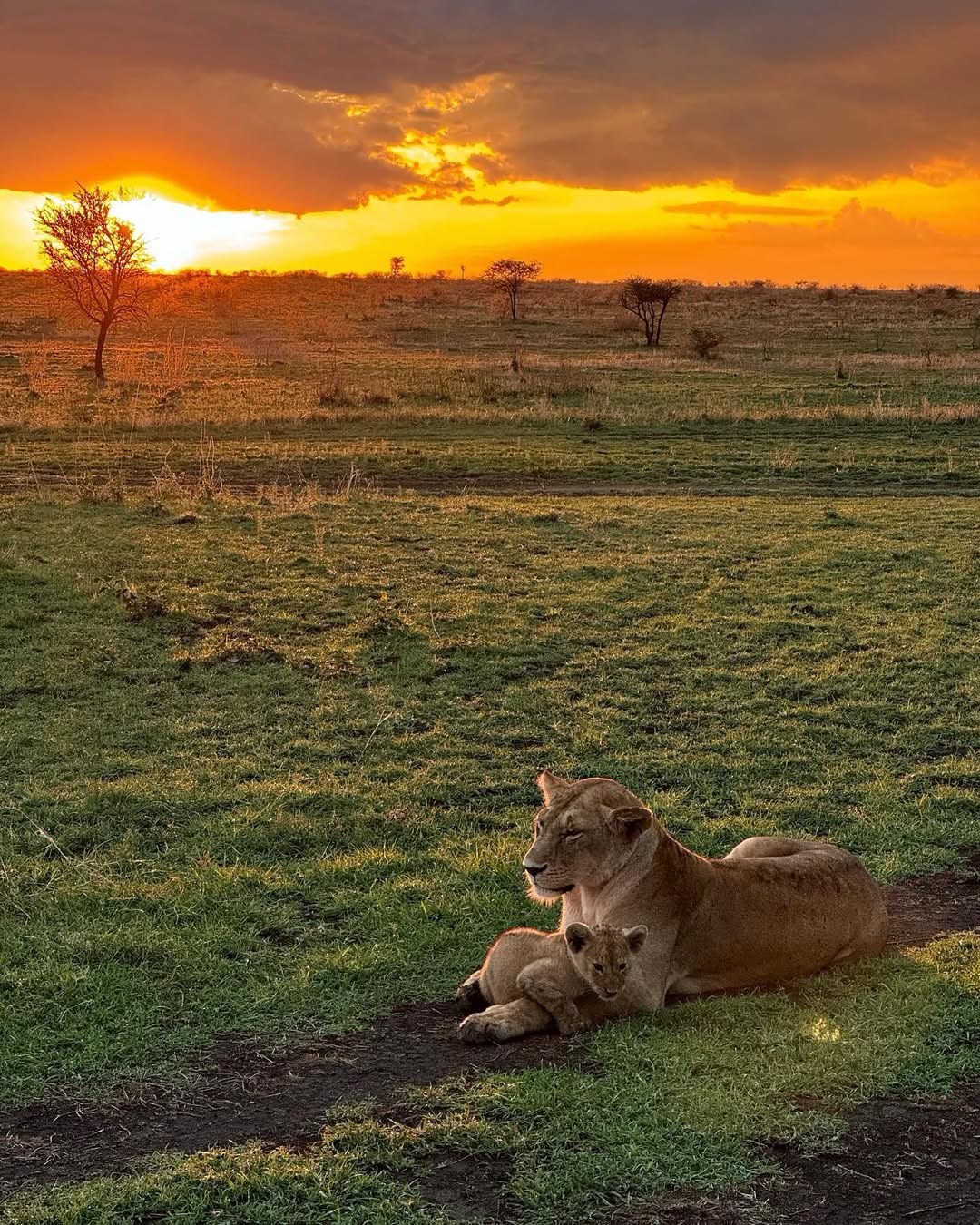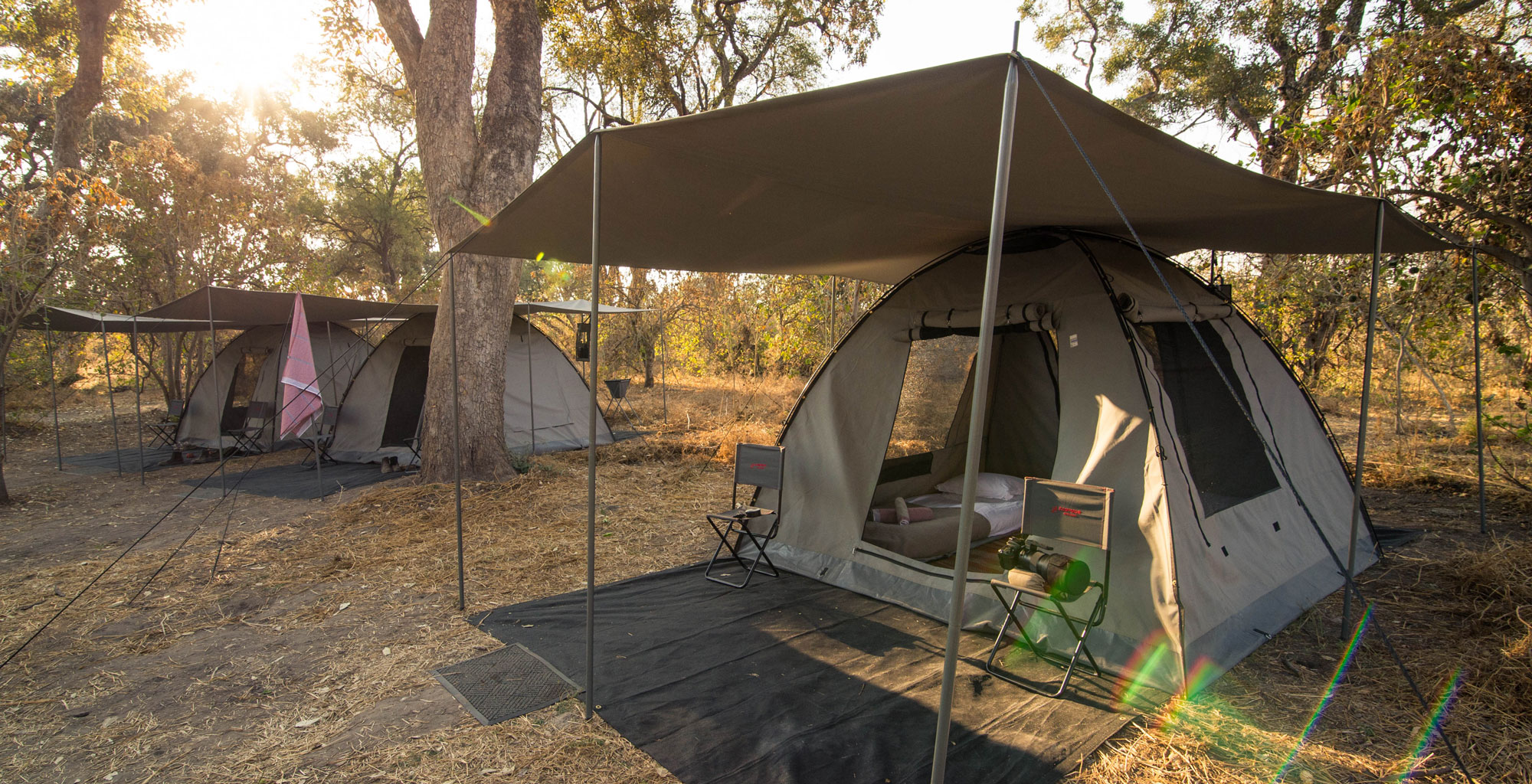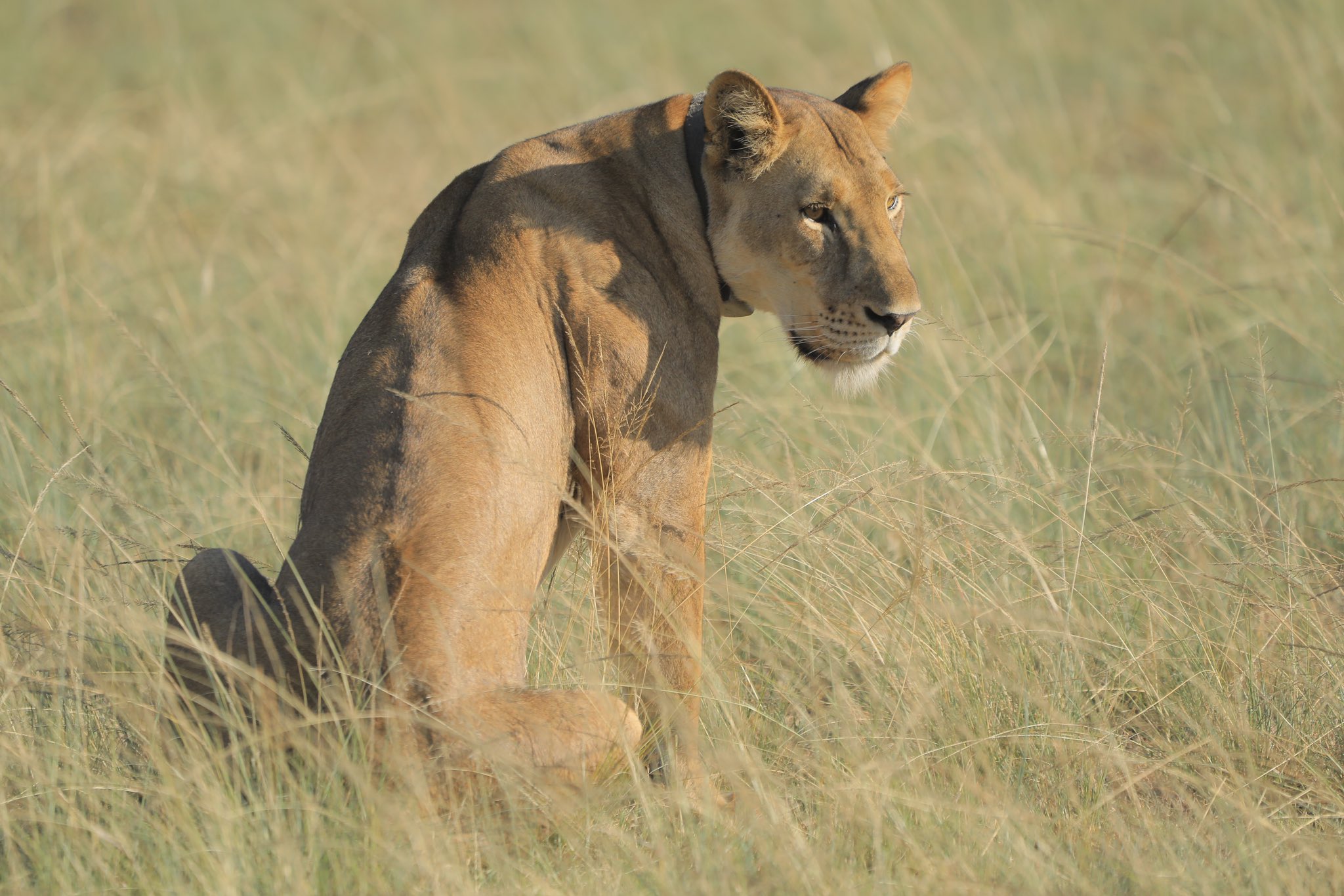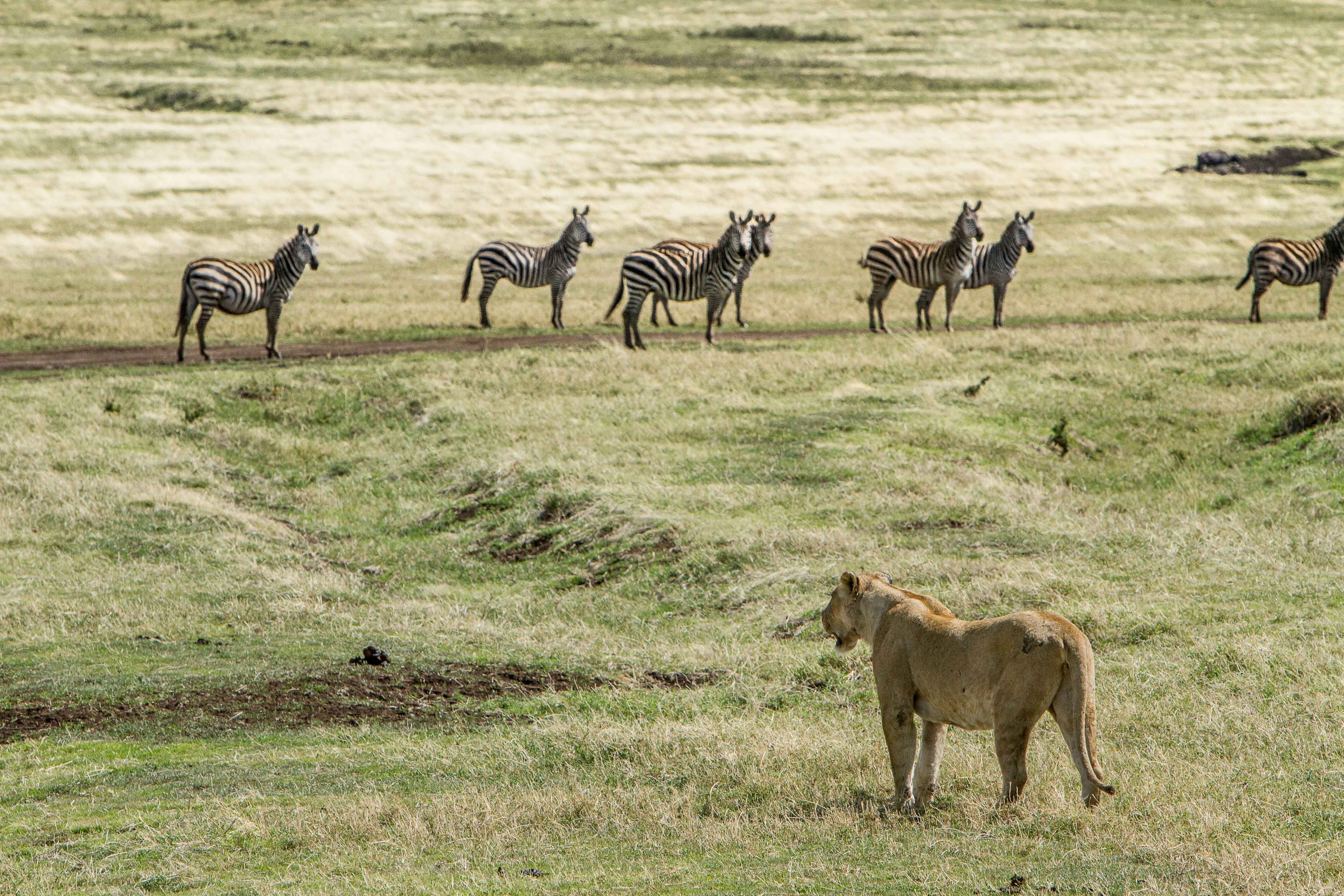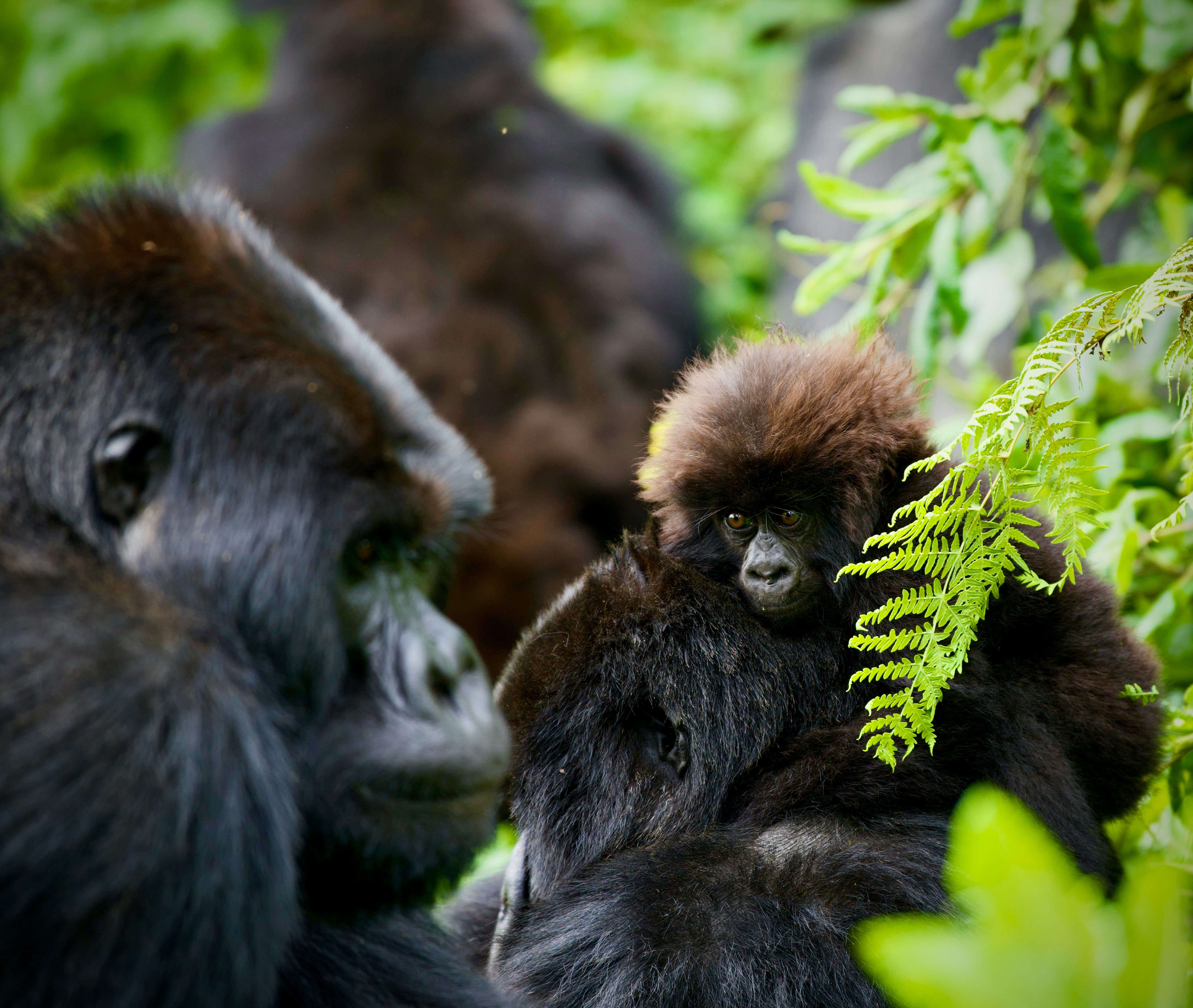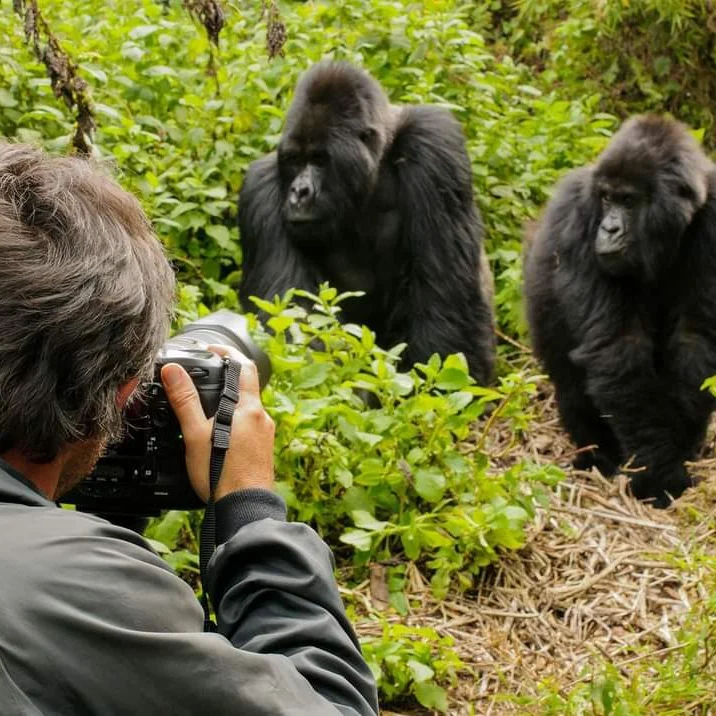20 Days Uganda Classic Safari Tours
uganda
Overview
This is a 20-day itinerary that takes you through some of the best destinations in Uganda, allowing you to experience the country's rich wildlife, culture, and stunning natural scenery.
The trip begins with your arrival at Entebbe International Airport, where you will be picked up by your driver/guide and transferred to Jinja for a day of adventure activities, such as white-water rafting and bungee jumping. You will then proceed to Sipi Falls, where you will enjoy scenic hikes and stunning waterfalls.
The journey continues to Moroto via Pian Upe, where you will experience the true wilderness of Uganda and explore Kidepo Valley National Park, one of the most beautiful and remote parks in Africa.
You will then proceed to Murchison Falls National Park, where you will enjoy game drives and a boat trip along the Nile River to the base of the falls. From there, you will proceed to Kibale Forest National Park, where you will track chimpanzees and take a nature walk in Bigodi swamp.
The journey then takes you to Queen Elizabeth National Park, where you will enjoy game drives and a boat trip along the Kazinga Channel. You will also visit Ishasha for a chance to see the famous tree-climbing lions.
The highlight of the trip is gorilla trekking in Bwindi Impenetrable National Park, where you will spend a day tracking these gentle giants and learning about their conservation. You will also visit the nearby Batwa community to learn about their traditional way of life.
The trip ends with a visit to Lake Bunyonyi, a beautiful lake in southwestern Uganda known for its stunning scenery and birdlife. You will also visit Lake Mburo National Park for game drives and nature walks before transferring back to Kampala or Entebbe airport for your departure flight.
Overall, this trip offers a great mix of adventure, wildlife, culture, and natural beauty, allowing you to experience the best of what Uganda has to offer
Trip highlights
The trip itinerary includes various highlights that offer unique experiences and adventures to visitors. Here are the trip highlights in detail:
Ø Jinja: Transfer to Jinja on day 2 offers an opportunity to explore the adventure capital of Uganda. Visitors can indulge in various adventure activities such as white water rafting, bungee jumping, kayaking, horseback riding, and quad biking. Visitors can also visit the Source of the Nile, which is the world's longest river.
Ø Sipi Falls: The trip to Sipi Falls on day 3 offers an opportunity to explore the stunning waterfalls, hike the nearby hills and visit the local coffee plantations.
Ø Kidepo Valley National Park: The trip to Kidepo Valley National Park on day 5 and 6 offers a unique safari experience to visitors. The park is located in the remote northeastern part of Uganda and offers an opportunity to see the wildlife that is unique to the region. Visitors can see the cheetahs, bat-eared foxes, ostriches, and various bird species.
Ø Murchison Falls National Park: The trip to Murchison Falls National Park on day 7 and 8 offers a classic safari experience to visitors. Visitors can see the wildlife such as elephants, lions, giraffes, and buffalos. The highlight of the trip is the boat trip along the Nile River, which offers an opportunity to see the Murchison Falls, which is one of the world's most powerful waterfalls.
Ø Kibale Forest National Park: The trip to Kibale Forest National Park on day 9 and 10 offers an opportunity to track the chimpanzees and explore the Bigodi swamp walk. Visitors can also visit the Ziwa Rhino Sanctuary, which is a conservation area that is home to the white rhinos.
Ø Queen Elizabeth National Park: The trip to Queen Elizabeth National Park on day 11 and 12 offers a classic safari experience to visitors. Visitors can see the wildlife such as lions, elephants, buffalos, and various antelope species. The boat trip along the Kazinga Channel offers an opportunity to see the hippos, crocodiles, and various bird species.
Ø Bwindi Impenetrable National Park: The trip to Bwindi Impenetrable National Park on day 14 and 15 offers an opportunity to track the endangered mountain gorillas. The park is home to over half of the world's remaining mountain gorillas. Visitors can also visit the Batwa communities, which are indigenous people that were displaced from the park when it was gazetted as a national park.
Ø Lake Bunyonyi: The trip to Lake Bunyonyi on day 16 and 17 offers an opportunity to relax and enjoy the scenic views of the lake. Visitors can indulge in various activities such as canoeing, bird watching, visiting the local communities, or hiking to the top of the nearby hills to enjoy the panoramic views of the lake.
Ø Lake Mburo National Park: The trip to Lake Mburo National Park on day 18 and 19 offers an opportunity to see the wildlife such as zebras, impalas, elands, and various antelope species. Visitors can also take a guided nature walk or bush walk to explore the flora and fauna of the park.
Itinerary
Day 1 of the itinerary involves arriving at Entebbe International Airport, where you will be picked up by your tour guide. The guide will be waiting for you at the airport with a signboard displaying your name. Upon meeting your guide, you will be welcomed to Uganda, and your luggage will be loaded into the safari vehicle. Your guide will then brief you about the trip and answer any questions you may have.After the briefing, you will start your journey to your hotel in either Kampala or Entebbe, depending on your preference. The journey to your hotel will take approximately 1 to 2 hours, depending on traffic conditions. During the drive, your guide will point out some of the sights and sounds of the city, giving you a glimpse of the local life and culture.Once you arrive at your hotel, you will be welcomed by the hotel staff and escorted to your room. Your guide will confirm the itinerary for the trip and answer any last-minute questions you may have. You will then have time to relax, freshen up, and prepare for the start of your safari adventure the next day.Depending on your arrival time, your guide may suggest some optional activities you can do in the area, such as visiting the Entebbe Botanical Gardens, the Uganda Wildlife Education Centre, or the Ngamba Island Chimpanzee Sanctuary. Your guide can arrange for any additional activities upon request.Overall, Day 1 of the itinerary is meant to ensure that you have a smooth and comfortable arrival in Uganda, and that you have time to rest and prepare for the exciting journey ahead.
After departing from Kampala or Entebbe, you will embark on a journey eastwards towards Jinja. The journey typically takes around 2-3 hours, depending on the traffic and road conditions.Once you arrive in Jinja, you will head straight to the source of the Nile, which is the world's longest river and is considered as the heart of Africa. The source of the Nile is a popular tourist attraction, and visitors can take a boat ride to explore the river and see where it begins.The boat ride usually takes around 2 hours, and visitors can enjoy the scenic views of the river, including the lush vegetation and the surrounding hills. During the boat ride, visitors can also see various bird species, such as the African Fish Eagle, Kingfishers, and egrets.After the boat ride, visitors can take a tour of the source of the Nile and learn about its history and significance to the region. There are also various souvenir shops where visitors can buy local crafts and souvenirs.In addition to visiting the source of the Nile, Jinja is also known for its adventure activities. Visitors can indulge in white-water rafting, bungee jumping, kayaking, horseback riding, and quad biking. These activities are a great way to experience the adrenaline rush and enjoy the scenic beauty of the area.Overall, a visit to Jinja is a great way to start the Uganda safari adventure and experience the beauty and excitement of the Nile River and the surrounding area.
Day 3 of the itinerary involves a transfer to Sipi Falls, which is a series of three waterfalls located on the foothills of Mount Elgon in the eastern part of Uganda. The journey from Entebbe International Airport to Sipi Falls will take several hours, depending on the traffic and road conditions. The drive will take you through the scenic landscapes of Uganda, passing through different towns and villages along the way.Upon arrival at Sipi Falls, you will check into your accommodation and rest for a while before embarking on a guided walk to explore the falls. The guided walk is usually led by experienced local guides who have a good knowledge of the area and can provide insightful information about the falls and the surrounding environment.The walk to the falls usually takes about 2-3 hours, depending on your pace and fitness level. Along the way, you will be able to enjoy the scenic views of the surrounding landscape, which includes lush green vegetation, rocky cliffs, and the beautiful waterfalls cascading down the hills.The first waterfall is located near the starting point of the walk and is the smallest of the three falls. The second waterfall is located about 15-20 minutes from the first fall and is the most popular of the three falls. It is the highest waterfall, with water cascading down a 100-meter cliff. The third waterfall is located about 30-40 minutes from the second waterfall and is the most secluded of the three falls. It is located in a beautiful valley and offers a serene environment for visitors to relax and enjoy the natural beauty of the falls.During the walk, you will also be able to visit the local coffee plantations and interact with the local communities, who are known for their hospitality and friendliness. The local guides will provide insightful information about the local culture and way of life, making the experience more enriching and informative.Overall, the guided walk to explore the Sipi Falls is a must-do activity for anyone visiting the area. The stunning scenery, friendly locals, and beautiful waterfalls make for an unforgettable experience that will leave you with lasting memories of your trip to Uganda.
On day 4 of the trip, you will leave Sipi Falls and head towards Moroto, a town located in the northeastern region of Uganda. The journey will take you through the stunning Pian Upe Game Reserve, which is the second-largest conservation area in Uganda. he reserve covers an area of about 2,788 square kilometers and is home to various wildlife species, including giraffes, zebras, elands, antelopes, buffaloes, hyenas, and over 200 bird species.Upon arrival at Pian Upe Game Reserve, you will have a chance to experience a game drive, which is an excellent way to explore the reserve and see the wildlife. The game drive will take you through the reserve's grasslands and savannahs, where you can spot different animals grazing or hunting for food. Some of the animals you may see include zebras, giraffes, gazelles, and antelopes, among others. You will have an experienced guide with you to help you identify the different species and answer any questions you may have.After the game drive, you will continue your journey towards Moroto. The drive will take you through the beautiful landscapes of Karamoja region, which is home to the Karamojong people. This region is characterized by rolling hills, rocky outcrops, and vast grasslands. You will have an opportunity to observe the daily life of the Karamojong people, who are semi-nomadic pastoralists known for their unique culture, including their traditional dress and intricate beadwork.Upon arrival in Moroto, you will check into your accommodation and relax for the evening. The town of Moroto offers a unique opportunity to explore the culture of the Karamojong people, and you can take a guided tour to learn more about their traditions and way of life.
Day 5 of the itinerary involves a trip to Kidepo Valley National Park, one of Uganda's most remote and pristine national parks. The park is located in the northeastern part of Uganda, near the border with South Sudan and Kenya.the day begins with breakfast, after which visitors embark on a scenic drive to the park. The journey takes visitors through a remote region of Uganda, passing through small villages and experiencing the local culture and way of life.Upon arrival at the park, visitors are greeted by stunning landscapes and an abundance of wildlife. Kidepo Valley National Park is home to a variety of animals, including elephants, lions, giraffes, zebras, cheetahs, and many more. The park is also known for its unique bird species, including the ostrich and the kori bustard.Visitors then embark on a guided game drive, which is a great way to explore the wildlife and the scenic landscapes. The game drive is led by a knowledgeable guide who is familiar with the park and its inhabitants. The guide will take visitors through the park, pointing out animals and sharing interesting facts about their behavior and habitat.During the game drive, visitors will have the opportunity to see a variety of wildlife up close and personal. They can see large herds of elephants and buffalos, as well as predators such as lions and cheetahs hunting for prey. Visitors can also see giraffes grazing on the trees and zebras galloping through the open plains.Apart from the wildlife, the park also has beautiful landscapes and scenery that visitors can enjoy during the game drive. Visitors can see the Narus Valley, which is a wide open plain, and the Kidepo Valley, which is surrounded by hills and mountains.Overall, a trip to Kidepo Valley National Park is a unique and unforgettable experience that offers visitors the opportunity to see some of Uganda's most impressive wildlife and landscapes.
Day 6 of the itinerary is dedicated to exploring Kidepo Valley National Park with guided game drives. Kidepo Valley National Park is located in the remote northeastern part of Uganda and is one of the most isolated and pristine wilderness areas in Africa. The park is known for its rugged savannah landscapes, stunning views, and unique wildlife.The day will start early in the morning, with visitors meeting their guide at the lodge for a briefing before setting off for the game drive. The game drives will be conducted in open-roof safari vehicles, which offer an unobstructed view of the park's wildlife and landscapes.During the game drives, visitors will have an opportunity to see the unique wildlife that is endemic to the region, including cheetahs, bat-eared foxes, ostriches, and various bird species. Visitors will also have an opportunity to see the park's big game, such as elephants, buffalos, lions, leopards, and zebras.The game drives will be guided by experienced and knowledgeable guides who will share information about the park's wildlife, flora, and fauna. The guides will also share interesting stories and facts about the park's history and conservation efforts.The game drives will be conducted in different parts of the park, each with its unique landscapes and wildlife. Visitors will have an opportunity to explore the Narus Valley, which is the park's most accessible area and has a wide variety of wildlife. The park's other areas, such as the Kidepo Valley and Karamoja region, are more remote and offer a more rugged and adventurous experience.The day will be long, with breaks for breakfast, lunch, and rest in between the game drives. Visitors will return to their lodge in the late afternoon, tired but satisfied with the day's adventures and experiences.In summary, day 6 of the itinerary offers an opportunity for visitors to explore and experience the unique wildlife, landscapes, and culture of Kidepo Valley National Park through guided game drives. The day promises to be an unforgettable adventure and an opportunity to create lasting memories.
On day 7 of the itinerary, visitors will leave Kidepo Valley National Park and travel to Murchison Falls National Park, which is located in the northwest part of Uganda. The distance between the two parks is approximately 370 km, and the journey can take up to 8 hours, depending on road conditions and traffic.The drive will take visitors through scenic landscapes, including the remote plains of Karamoja, where they may see pastoralists grazing their cattle, and the picturesque views of the Albertine Rift escarpment. Along the way, visitors can also make stops at local markets and villages to interact with the locals and learn about their way of life.After the long drive, visitors will check-in at their accommodation in Murchison Falls National Park, where they will spend the next two nights. The park is Uganda's largest and one of its most popular safari destinations, known for its impressive wildlife and beautiful scenery.Visitors will have the opportunity to enjoy a classic African safari experience in Murchison Falls National Park. They can take a game drive in the park to spot wildlife such as lions, elephants, giraffes, buffalos, and antelopes. Game drives are usually conducted early in the morning or late in the afternoon when animals are most active.The highlight of the visit to Murchison Falls National Park is a boat trip along the Nile River to the Murchison Falls. The boat trip offers an opportunity to see hippos, crocodiles, and various bird species such as the rare shoebill stork. Visitors will also get up close to the Murchison Falls, where they can feel the mist from the falls and take stunning photos.In summary, day 7 involves a long drive from Kidepo Valley National Park to Murchison Falls National Park, followed by a classic safari experience with game drives and a boat trip along the Nile River to see the Murchison Falls.
On day 8 of the itinerary, visitors will have a full day to explore Murchison Falls National Park with guided game drives and a boat trip on the Nile River to see the spectacular Murchison Falls.The day will start with an early morning game drive through the park, which offers an opportunity to see the wildlife that is active during the early hours of the day. Visitors will be accompanied by a trained guide who will help them spot the animals and provide information about the park's flora and fauna. Murchison Falls National Park is home to a wide range of wildlife, including lions, elephants, giraffes, buffaloes, hyenas, and various antelope species. The game drive will last for approximately three to four hours, depending on the sightings and the visitors' preferences.After the game drive, visitors will return to their accommodation for breakfast before embarking on the next activity, a boat trip on the Nile River. The boat trip is one of the highlights of the Murchison Falls National Park experience, offering visitors an opportunity to see the Murchison Falls up close. The boat trip takes visitors to the bottom of the falls, where they can see the Nile River squeeze through a narrow gorge before plunging over a 43-meter-high waterfall. Visitors will also have a chance to see the hippos, crocodiles, and various bird species that live in and around the Nile River.The boat trip lasts for approximately three hours, and visitors will be accompanied by a trained guide who will provide information about the park's history and wildlife. The boat trip will end at the base of the falls, where visitors can take a short hike to the top of the falls for a panoramic view of the park.After the boat trip, visitors will return to their accommodation for lunch and some rest before embarking on an afternoon game drive. The afternoon game drive offers an opportunity to see the wildlife that is active during the late hours of the day, such as lions and hyenas. The game drive will last for approximately two to three hours, depending on the sightings and the visitors' preferences.Overall, day 8 of the itinerary offers visitors an opportunity to explore Murchison Falls National Park with guided game drives and a boat trip on the Nile River. The day is packed with exciting activities that offer unique experiences and unforgettable memories.
Zziwa Rhino Sanctuary is a conservation area located in the Nakasongola district of central Uganda. The sanctuary is a collaborative effort between the Uganda Wildlife Authority and the Rhino Fund Uganda to breed and reintroduce the white rhinos into Uganda's protected areas.The sanctuary was established in 2005, and since then, it has been home to over 20 white rhinos. The sanctuary covers an area of 70 square kilometers, and it is surrounded by the Ziwa Ranchers Association land, which is used for grazing cattle.The sanctuary is heavily guarded to ensure the safety and security of the rhinos.When you arrive at the sanctuary, you will be greeted by a guide who will take you through a brief orientation about the sanctuary and the rhinos. The guide will explain the history of the rhinos in Uganda, their conservation status, and the efforts being made to protect them.After the briefing, you will set off on a guided walk through the sanctuary to see the rhinos. The walk takes about two hours, and it offers an opportunity to see the rhinos up close and in their natural habitat. The guide will take you to the areas where the rhinos are known to graze and rest, and you will have an opportunity to observe them from a safe distance.The white rhinos are one of the world's most endangered species, and they are under threat from habitat loss, poaching, and civil unrest. The Zziwa Rhino Sanctuary is one of the few places in Uganda where visitors can see the rhinos up close and contribute to their conservation efforts. By visiting the sanctuary, you are helping to support the conservation of the rhinos and their habitat.After the guided walk, you will continue your journey to Kibale Forest National Park, where you will spend the next two days tracking chimpanzees and exploring the park's unique ecosystem.
On day 10 of the trip, visitors will have the opportunity to go on a guided chimpanzee tracking in Kibale Forest National Park, one of the best places in Africa to see chimpanzees in their natural habitat. Kibale Forest is home to over 1,500 chimpanzees, making it one of the largest populations of chimps in the world. Visitors will be led by an experienced guide who will take them deep into the forest to observe these fascinating creatures in their natural habitat. The tracking can take several hours, and the length of the trek may depend on the location of the chimpanzees on the day of the visit.During the chimpanzee tracking, visitors will get a chance to see how the chimpanzees interact with each other, how they search for food, and how they groom themselves. Visitors may also have the opportunity to hear the chimpanzees communicating with each other, as they use a variety of vocalizations, gestures, and facial expressions to convey information.After the chimpanzee tracking, visitors will take a guided walk in the nearby Bigodi Swamp. The swamp is known for its rich biodiversity, including a wide variety of bird species, monkeys, butterflies, and other wildlife. Visitors will be led by a local guide who will help them spot some of the swamp's most interesting inhabitants, including the Great Blue Turaco, the Black and White Colobus Monkey, and the Red-tailed Monkey.During the Bigodi swamp walk, visitors will also learn about the traditional uses of the swamp by the local communities. The swamp is an important source of food, medicine, and building materials for the neighboring communities, and visitors will have the opportunity to learn about their traditional practices and beliefs.Overall, the day 10 itinerary offers visitors an immersive experience in the natural and cultural wonders of Kibale Forest National Park. From tracking chimpanzees to exploring the Bigodi swamp, visitors will have the opportunity to see a wide range of wildlife and learn about the importance of conservation in protecting these unique ecosystems.
On day 11 of the itinerary, visitors will transfer from Kibale Forest National Park to Queen Elizabeth National Park. Queen Elizabeth National Park is located in the western part of Uganda and is known for its diverse wildlife and stunning landscapes.The park is home to over 95 mammal species and over 600 bird species.Upon arrival in the park, visitors will have a guided game drive in the evening. The game drive will be led by an experienced guide who will take visitors on a safari adventure through the park. Visitors will have the opportunity to see the wildlife in their natural habitats and learn about their behaviors and characteristics.During the game drive, visitors can expect to see a variety of wildlife such as elephants, lions, buffalos, hyenas, and various antelope species. The park is also home to some unique species such as the giant forest hog, leopard, and the rare tree-climbing lions. The game drive will take visitors through the various landscapes of the park, such as the savannah grasslands, wetlands, and the scenic crater lakes.The evening game drive is an excellent time to see the predators such as lions and hyenas, which are more active at night. Visitors will also have the opportunity to see the nocturnal animals such as bush babies, genets, and civets.The guided game drive in the Queen Elizabeth National Park will last for about 3-4 hours, and visitors will return to their accommodation in the park for dinner and overnight stay. The evening game drive is an excellent start to exploring the wildlife and landscapes of the park, and visitors can look forward to a full day of safari adventure the following day.
On day 12 of the itinerary, visitors will embark on a morning game drive in Queen Elizabeth National Park, followed by a boat trip along the Kazinga Channel. This part of the trip is one of the highlights of the itinerary and offers an excellent opportunity to experience the wildlife and natural beauty of the park.The game drive will start early in the morning, at around 6:30 am, to catch the animals when they are most active. The experienced safari guides will take visitors through the park in a 4x4 safari vehicle, following the tracks and trails in search of wildlife. Queen Elizabeth National Park is home to over 95 mammal species and 600 bird species, including elephants, lions, leopards, buffalos, hyenas, and various antelope species. Visitors can also spot tree-climbing lions, which are unique to the park. The game drive lasts for about 3-4 hours, depending on the sightings and interests of the visitors.After the game drive, visitors will take a boat trip along the Kazinga Channel, which is a natural waterway that connects Lake Edward and Lake George. The boat trip starts at around 2 pm and lasts for about 2 hours. During the boat trip, visitors can see numerous hippos and crocodiles basking in the sun on the banks of the channel. The channel is also home to various bird species such as kingfishers, fish eagles, pelicans, and cormorants.Visitors can also see elephants, buffalos, and other wildlife coming to the water's edge to drink and cool off.The boat trip is a unique and relaxing way to explore the park's wildlife and natural beauty, and visitors can capture some stunning photographs of the scenery and wildlife. The Kazinga Channel boat trip is an excellent opportunity for visitors to experience Uganda's diverse ecosystem and is a must-do activity for anyone visiting Queen Elizabeth National Park.
On day 13 of the itinerary, after breakfast, visitors will be driven to Ishasha, which is a part of Queen Elizabeth National Park located in the southern region of Uganda. The journey from Queen Elizabeth National Park to Ishasha is an adventure in itself as visitors can enjoy the scenic beauty of the park while driving.Upon arrival in Ishasha, visitors will go on a game drive to see the unique attraction of Ishasha, the tree-climbing lions. These lions are known for their unique behavior of climbing trees, which is not commonly seen in other parts of the world. Visitors will have the opportunity to observe the lions closely, as they are often found resting or sleeping on the branches of large fig trees.In addition to the tree-climbing lions, Ishasha is also home to other wildlife such as elephants, buffalos, antelopes, and various bird species. Visitors can expect to see these animals during the game drive while driving through the savannah grassland and the riverine forest. The game drive is an excellent opportunity to witness the natural beauty of the region, with its towering trees, sparkling streams, and lush vegetation.The game drive in Ishasha typically takes 3-4 hours, and visitors are advised to carry binoculars and cameras to capture the stunning sights of the park.After the game drive, visitors can relax at the campsite or lodge while enjoying the views of the park. Visitors can also indulge in bird watching or go for a guided nature walk to explore the flora and fauna of the park.Overall, the visit to Ishasha for the tree-climbing lions offers a unique safari experience to visitors, and the game drive in Ishasha is an excellent opportunity to witness the stunning wildlife and natural beauty of the region.
Bwindi Impenetrable National Park is a UNESCO World Heritage Site located in southwestern Uganda, known for its biodiversity and as a sanctuary for the endangered mountain gorillas. The park covers an area of over 320 square kilometers and is home to about 400 gorillas, which is roughly half of the total population of mountain gorillas in the world.After breakfast, you will embark on a drive to Bwindi Impenetrable National Park, which will take you through some of the most scenic parts of Uganda. The journey will take approximately 5-6 hours, and along the way, you will pass through several small towns and villages, each with its unique culture and way of life.Once you arrive in Bwindi, you will check in to your accommodation and have some time to rest and freshen up. In the evening, you will take a community walk to explore the local communities around the park. This walk will give you a chance to interact with the locals, learn about their culture and way of life, and see firsthand the challenges they face living next to the park.The community walk will take you through several villages, each with its unique customs and practices. You will have the opportunity to visit a local school, a traditional healer, and a local brewery, where you can taste the locally brewed beer. You will also get to meet with the Batwa people, who were the original inhabitants of the forest and have a rich cultural heritage.During the walk, you will learn about the different plants and animals found in the area and how they are used for medicinal and other purposes. You will also get a chance to see some of the community development projects that are being implemented around the park, aimed at improving the livelihoods of the locals and reducing their dependency on the forest.In summary, the evening community walk in Bwindi Impenetrable National Park is an opportunity to learn about the local culture and way of life of the people living around the park. It is a chance to interact with the locals, see firsthand the challenges they face, and appreciate their efforts towards conservation and sustainable development.
Included
- Airport transfers
- 4×4 transport with English speaking local guide/driver for all road transport
- Accommodation & all meals above
- All park entrances fees
- Comfortable and hygienic vehicle for sightseeing on all days as per the itinerary.
Excluded
- International Visas

